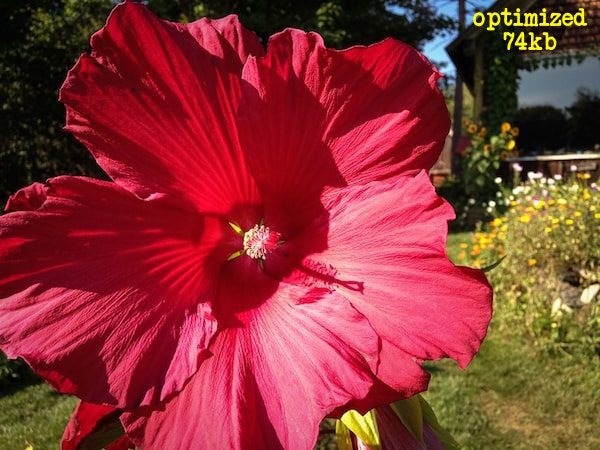Did you know that overly large images can slow your website to a crawl? We’re all aware by now that visitors won’t hang around for more than three seconds waiting for a page to load, so it’s vital that you optimize your online graphics.
How much disk space does a photo use?
An uncompressed square iPhoto is actually about 2450 pixels x 2450 pixels (which is close to twice the size of your laptop screen). When I upload that photo to my WordPress site, it will save the huge (1.4Mb) original and create three other versions – one of which we’ll use for our post.
a Large version (default 600px)
a Medium version (default 300px)
a Thumbnail (default 150px)
So for storage purposes alone, I’d be better off uploading an optimized 900px x 900px image.

This is the “Medium” version, 300px wide
What is the largest photo I should upload?
On the most basic level, a photo that’s larger than your page width is consuming more storage and bandwidth than necessary. If you built your site yourself, you will know the size of your page, if not – call your web person and find out what it is.
How can I reduce the size of my photos? I don’t do Photoshop.
Chances are your PC or Mac includes a basic photo editor that will allow you to easily reduce the size and pixel density of your images. On a PC you’ll be looking for Paint, and on a Mac you’ll use Preview. Each of them sports a pretty simple interface and offers a straightforward way to resize your photos.
Can I do this online?
Yes. Plug “online image resize” into Google and you’ll find plenty of free and paid image editors, many with a simple free option if you just want to resize a photo. Be prepared to upload – “optimize” – and download your images, but one of these programs will be a good fit if you’re needs are modest. If you are regularly uploading photos to your site and you have questions about resizing and optimizing your photos, reach out to your web developer for a suggestion.
An example:
I reduced this photo with an online optimizer. Swipe the bar to compare the original with the optimized version.


